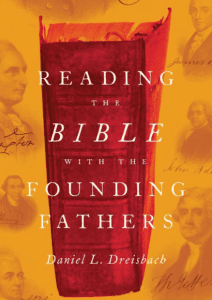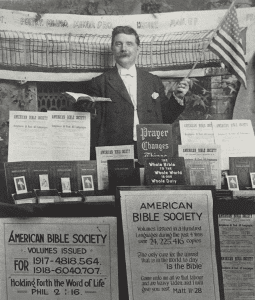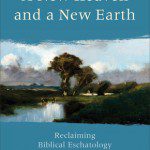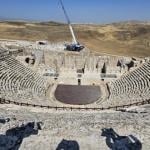 The second essay in the new book by Marc Zvi Brettler (Brandeis University), Peter Enns (Eastern University) and Daniel J. Harrington (Boston College), The Bible and the Believer: How to Read the Bible Critically & Religiously, is by Harrington, a biblical scholar, Catholic priest and Jesuit. Harrington is not simply a Catholic academic – he has also “been active as a Catholic priest, preaching on the Biblical texts every Sunday at two different churches in the Boston area and on weekdays within my Jesuit community. (p. 113)” This brings a valuable perspective to his view of Scripture as religious and historical text.
The second essay in the new book by Marc Zvi Brettler (Brandeis University), Peter Enns (Eastern University) and Daniel J. Harrington (Boston College), The Bible and the Believer: How to Read the Bible Critically & Religiously, is by Harrington, a biblical scholar, Catholic priest and Jesuit. Harrington is not simply a Catholic academic – he has also “been active as a Catholic priest, preaching on the Biblical texts every Sunday at two different churches in the Boston area and on weekdays within my Jesuit community. (p. 113)” This brings a valuable perspective to his view of Scripture as religious and historical text.
Harrington makes a very significant point about Catholicism – and I would suggest about Christianity as a whole.
Catholicism is not a religion of “the book.” Islam may well be. And some say that Judaism and Protestantism (with its insistence on sola scriptura) are too. But Catholics view the Bible as primarily a witness to a person, Jesus of Nazareth, the Son of God, and the Word made flesh. Thus Catholicism is more a religion of a person. (p. 85)
A major point for reflection is focused on the question: Which came first … the Bible or the church? The church came first – the scripture of the early church was the Old Testament, and the church reshaped their understanding of the Old Testament through the lens of Jesus Christ. The New Testament reports and reflects on this reshaped understanding. So Harrington puts it like this: “Catholics regard the Bible as the church’s book and the church as guided by the Bible.” (p. 86)
Indispensable and Insufficient. Because the Bible is the church’s book it is first and foremost a religious book. But because it is a religious book historical-critical analysis is indispensable. To fully understand the text, one must understand the context of the text. In fact, Harrington suggests that in recent Catholic thinking “historical-critical analysis [is] the necessary starting point and foundation for religious reading.” (p. 88) The theological foundation for this is found in part in the incarnation. God comes to our level in order to faithfully reveal himself to us. Thus we should expect the scripture to be rooted in a cultural and historical context. This is my paraphrase of the idea – and it needs some careful definition and nuance. But the historical-critical analysis will never be sufficient because it will fail to appreciate the religious depth of the text.
Historical-critical analysis becomes a problem only when equated with philosophical presuppositions that rule out divine action. In some circles the biblical witness is discounted because it doesn’t equate modern materialism and because it describes a God who acts and interacts in the world. These theological and philosophical presuppositions are “incompatible with, and not part of, the positive Catholic understanding of historical criticism as an indispensable tool in biblical interpretation.” (p. 95)
Gospels First. Another interesting aspect of Harrington’s outline of the Catholic approach to Scripture is in the reading of the New Testament. The person-centeredness of Catholic reading plays a clear role here – and the consideration of this aspect can help to illuminate the way the bible can be read religiously and critically .
In Catholic piety and liturgy, the four Gospels (Matthew, Mark, Luke, and John) are preeminent because they are “the principal witness to the life and teachings of the incarnate Word, our Savior.” (Dei Verbum 18). There preeminence proceeds from the assumption that they “faithfully hand on” what Jesus did and taught.
However, Dei Verbum and other official Catholic documents insist that the Gospels have to be read and interpreted on three levels: Jesus, the early church, and the Evangelists. (p. 99)
The assumption is that Matthew, Mark, Luke, and John selected material on hand, either oral or written, to shape an honest and true account of Jesus. But they also addressed issues at play in the situation of the church to which they were writing. This shaping should impact our understanding of Scripture and of the nature of inspiration. Historical-critical analysis has a powerful role to play laying a foundation for the religious reading of the Gospels.
Concerning the rest of the New Testament:
In these writings, according to Dei Verbum 20 “those matters that concern Christ the Lord are confirmed, his authentic teaching is more fully stated, the saving power of Christ’s divine work is proclaimed, the origins and marvelous growth of the Church are recounted, and her glorious consummation is foretold.” While prominent in Catholic liturgy today, there is some truth to the observation that Protestants put more emphasis on the Epistles (especially Paul’s letters) and Catholics give more attention to the Gospels. (p. 99)
I will come back to some more of Harrington’s observations, and particularly the approach to the Old Testament that arises from these ideas. But this part of his essay leads to a number of questions worth some consideration.
Is Christianity a religion of “the book?”
Is Protestantism, like Catholicism better describes as a religion of a person? How would you nuance this?
Given the preeminence of the incarnation in Christian faith, should we be looking first to the Gospels?
If you wish to contact me directly you may do so at rjs4mail[at]att.net
If interested you can subscribe to a full text feed of my posts at Musings on Science and Theology.











